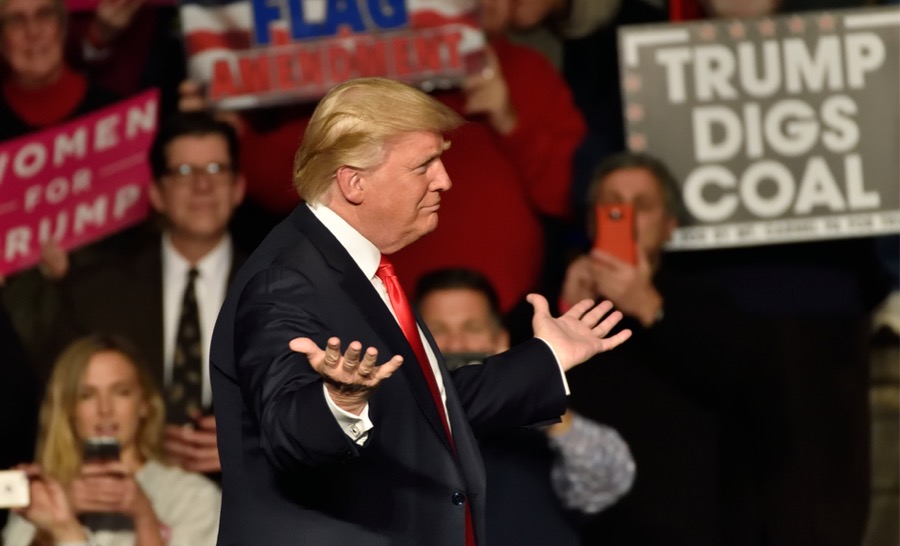Most U.S. states lost coal mining jobs in 2017 – data

Nearly two-thirds of U.S. coal producing states lost coal mining jobs in 2017, even as overall employment in the downtrodden sector grew modestly, according to preliminary government data obtained by Reuters.
The statistics come as the administration of President Donald Trump claims credit for new jobs in the coal industry, a business he has promised to revive by rolling back Obama-era environmental regulations.
Unreleased full-year coal employment data from the Mining Health and Safety Administration shows total U.S. coal mining jobs grew by 771 to 54,819 during Trump’s first year in office, led by Central Appalachian states like West Virginia, Virginia, and Pennsylvania – where coal companies have opened a handful of new mining areas.
“You know, West Virginia is doing fantastically well,” Trump told Reuters in an interview this week about the state, which gained 1,345 coal jobs last year, according to the data.
“It’s great coal.”
 But the industry also lost jobs in other Appalachian states like Ohio, Kentucky, and Maryland; the western Powder River Basin states Montana and Wyoming; as well as in several other states like Indiana, New Mexico, and Texas.
But the industry also lost jobs in other Appalachian states like Ohio, Kentucky, and Maryland; the western Powder River Basin states Montana and Wyoming; as well as in several other states like Indiana, New Mexico, and Texas.
Texas lost the largest number, at 455, and Ohio was a close second, losing 414, according to the data.
Pennsylvania, which gained 96 jobs in 2017, is also expected to go negative soon after Dana Mining announced this month it would close a mine employing about 400 people.
Overall, the number of U.S. coal jobs is still lingering near historic lows at less than one-third the level in the mid-1980s, according to Bureau of Labor Statistics data, as the industry loses market share to cheaper natural gas.
 Trump had campaigned on a promise to revive the coal industry, and since taking office he has begun rolling back climate change and other environmental regulations, and expanded leases on federal lands, in an effort to do so.
Trump had campaigned on a promise to revive the coal industry, and since taking office he has begun rolling back climate change and other environmental regulations, and expanded leases on federal lands, in an effort to do so.
While the effort has cheered the coal industry, it has had little impact on domestic demand for coal, with U.S. utilities still shutting coal-fired power plants at a rapid pace and shifting to cheaper natural gas.
Luke Popovich, a spokesman for the National Mining Association, said the bright spots in the industry in 2017 came amid a big surge in demand for shipments from overseas – but he also credited support from the administration.
“We have seen production rise this past year by more than six percent and exports rise five-fold over the previous year,” he told Reuters.
”Honest people can differ over how much credit the president deserves for this revival and how much credit belongs to market forces. To those of us closest to the coal industry, there is little question that the administration’s regulatory reset … has made a decisive difference.”
Editing by Richard Valdmanis and Marguerita Choy
More News
China deploys rare earths as weapon in trade war with Trump
Beijing said Friday it will tighten controls on exports of seven types of rare earths.
April 07, 2025 | 06:22 am
Wesdome to acquire Angus Gold in $28 million deal
The transaction quadruples Wesdome’s land position at the Eagle River gold operation in Ontario.
April 07, 2025 | 05:59 am
{{ commodity.name }}
{{ post.title }}
{{ post.excerpt }}
{{ post.date }}



Comments